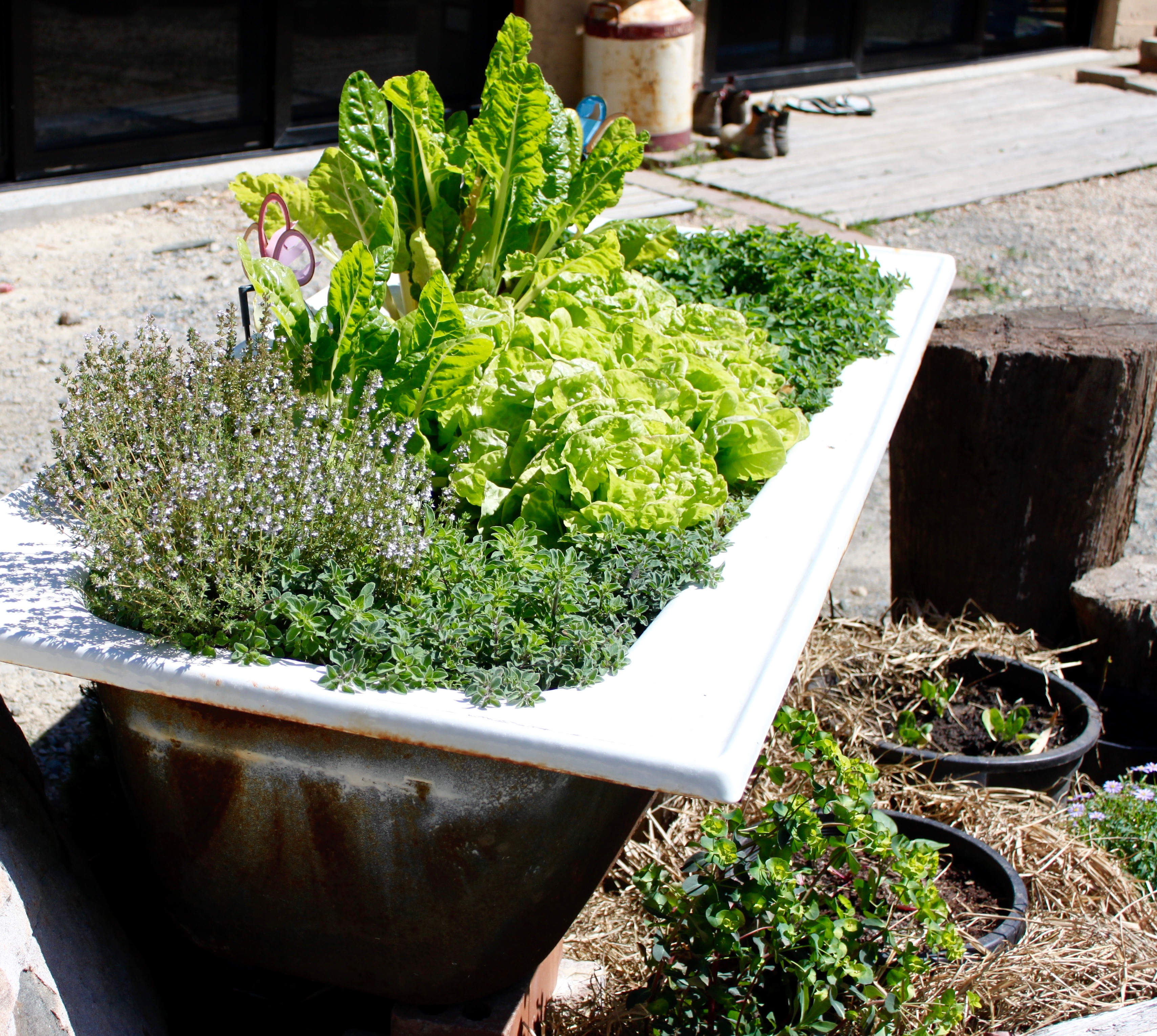
Growing Organic Vegetables at home can save you time, money and you know exactly what you are eating. Conventionally grown produce that you buy at the supermarket is sprayed with numerous amounts of chemicals including pesticides and fungicides. In contrast when you grow or buy organic vegetables these are not sprayed with any nasty chemicals.
Q. What if I wash my fruit and vegetables that have been sprayed with chemicals before eating them?
A. Unfortunately most chemical sprays are systemic, which means it enters the plants system and no amount of washing will remove the chemical from the plant.
3 things you need to know about growing Organic Vegetables in a Permaculture Garden
- Place salad greens and vegetables you need to access on a daily basis close to your kitchen or in your Zone 1 area close to the house. As you can see in the picture above a bath tub has been placed right near the front of the house which will be passed each day.
- Make your own compost or if you have to buy soil make sure it is good quality.
- You can either grow plants from seed or buy seedlings.
- Plant companions outside of your vegetable patch, like cosmos to attract beneficial insects to your garden.
WHICH SEEDS SHOULD I LOOK FOR?
If you do want to start off with seed that is also organic it is best to check and see if the packet has a symbol like this. Non organic seeds are treated with a fungicide before they are packaged.
WHY IS SOIL SO IMPORTANT?
Healthy plants = Healthy soil
Spend some time preparing your soil. We do this a number of ways at Garden to Table Permaculture but our favourite method is NO DIG.
NO DIG soil preparation is good in hard ground or where there is no top soil.
Simply layer organic materials such as grass clippings, straw, manure, vegetable scraps and make sure you add a layer of ‘green’ and ‘brown’ materials or nitrogen and carbon.
Examples of Green or Nitrogen materials:
Grass clippings,
Coffee grinds
Fresh or aged animal manure (free of weed seed)
Examples of Brown or Carbon materials:
Straw
Newspaper
Shredded office paper
Once you have layered the different materials add a layer of about 30cm of compost and then you are ready to plant straight into your new soil! As the seedlings or seeds grow the layers of carbon and nitrogen materials you have added with form rich soil which feeds the plants as they grow.
If you would like to learn some hands on skills growing organic vegetables at home then join us for our next one day workshop on A – Z of Growing Veggies at home.
Click here for information on our upcoming workshops or call Megan Cooke on 0413 769 530.





